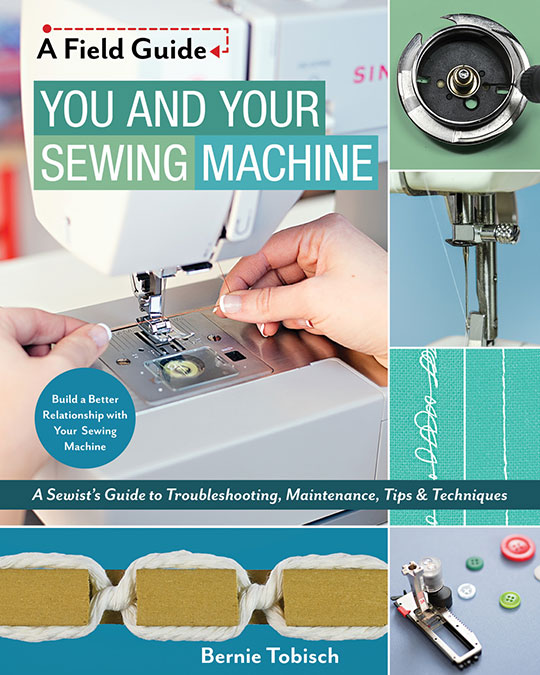How I Became a Sewing Machine Counselor
Posted by Bernie Tobisch on Aug 31st 2018
How did I come up with the idea to write You and Your Sewing Machine: A Sewist's Guide to Troubleshooting, Maintenance, Tips & Techniques? It's quite the story—read on to find out!

I started in the sewing machine business in the mid-seventies. I had been working in a bookstore located right next to a Singer shop and had gotten to know the manager. Glen was a good egg, and one day, when I was looking for a new job, he hired me.
I had always loved to take things apart, tinker, and fix things myself, so I couldn’t have fallen into a better profession. The job included sales, but I really loved the repair end of things. Glen often had to remind me that sometimes a broken machine was an opportunity to talk to a customer about a new machine. Once he even taped a screwdriver to the end of a pen and asked me “which end of this makes you more money?” He was certainly right at that time, in that job.

A few years later, I purchased one of the last Singer company stores and became a dealer. I added other brands and continued to learn more about repairing machines. I loved the challenge of seeing a new problem or a machine that I had not previously worked on. It wasn’t all roses, as sometimes it took me forever to sort out the issues and fix them, but I had fun and continued to learn.
One thing I soon learned was that sewists have a relationship with their machines. A sick sewing machine causes much grief and worry. Nobody wants to be without it for long. I can’t even count the number of times someone has brought me a machine on a Saturday, said, “No hurry, Monday is okay,” and then phoned on Sunday to see how it was going! I always take it as a compliment that someone who cares so much about their machine trusts me enough to look after it.
I now see myself as somewhat of a counselor in this relationship. I wrote You and Your Sewing Machine to try to provide answers to the questions that I have been asked frequently over the years. I often look at a minor issue as the sewing machine trying to communicate with the sewist. If you can understand what the machine is trying to say, then you can solve the problem quickly and by yourself. What may appear to be a tension problem, may in fact be something else. The fabric not feeding may just be a signal from the machine that it needs some care. A stitch not looking right may just mean you and your machine started off on the wrong foot. Pun intended!

I have included a fairly comprehensive troubleshooting guide. In it, you will find a column with common problems, then a list of probable causes, and finally a list of possible solutions, with the page number for that solution.
I really enjoyed writing this book, and it is my sincere hope that it will be of help to you!







